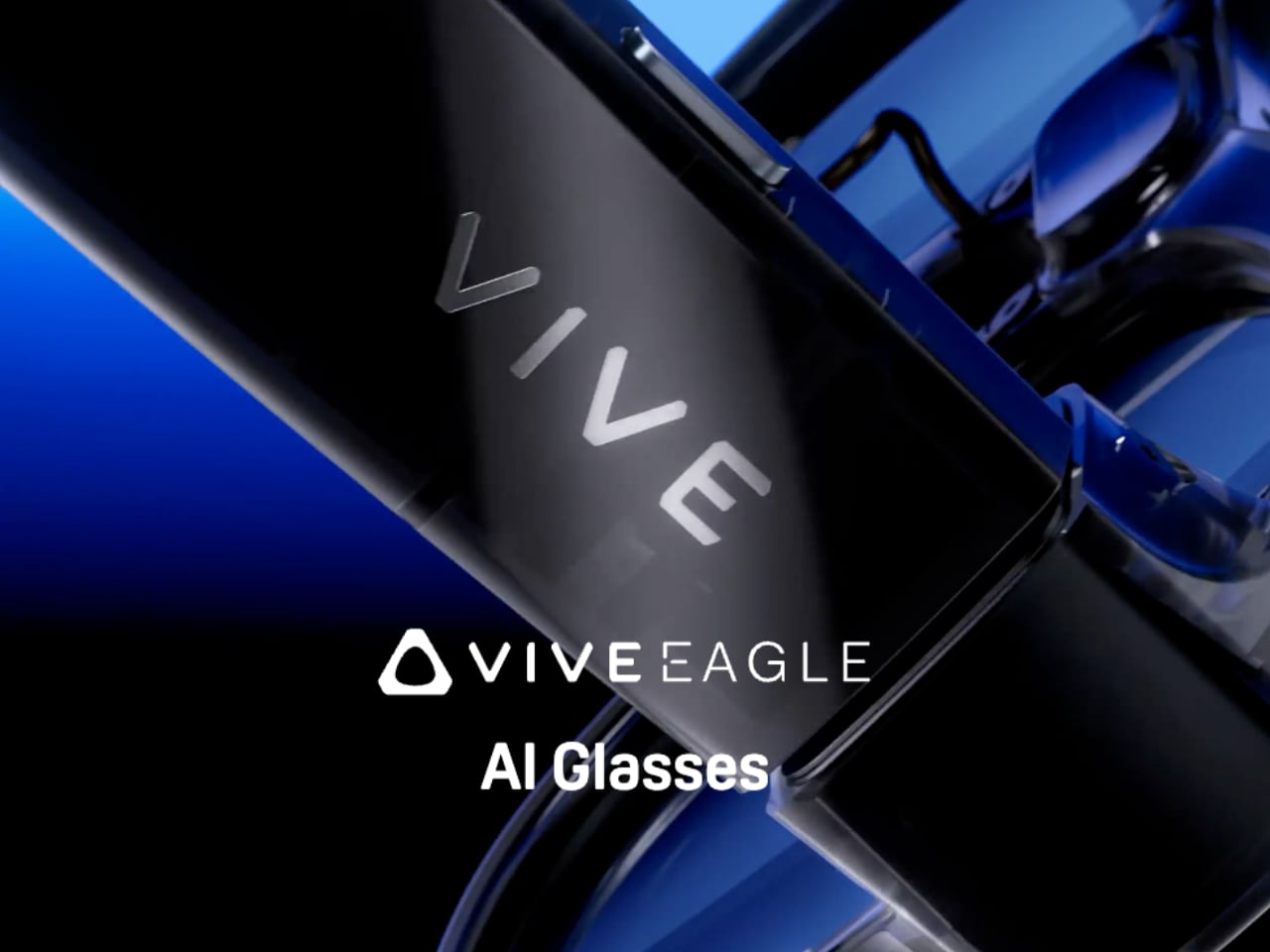HTC just dropped the Vive Eagle, and honestly, this might be the first smart glasses approach that makes sense. Instead of cramming everything into one half-baked AI system, they went with three different assistants: Google Gemini, ChatGPT, and their own Vive AI. Each one handles what it does best.
Designer: HTC
I love this approach because it mirrors how we already use different apps for different things. Need directions? Google’s got it. Want help brainstorming or writing something creative? ChatGPT steps in. Device controls and camera settings? That’s where Vive AI takes over. You switch between them with voice commands, which feels natural once you get used to the “Hey Vive” trigger phrase.
Lightweight Design That Won’t Break Your Nose
At 49 grams, these glasses feel like actual glasses rather than a computer strapped to your head. HTC partnered with Zeiss for the lenses, which immediately tells you they’re taking the optical quality seriously. The frame comes in translucent black or natural colors, walking that fine line between looking tech-forward and being something you’d actually wear in public.
The weight distribution is smart too. Most of the processing hardware sits in the temples, but it’s balanced well enough that you don’t feel lopsided after wearing them for a while. Though I’d want to test them for a full day before making any bold claims about all-day comfort.
The 235mAh battery gives you 36 hours on standby and about 4.5 hours of active use. That’s competitive with what’s out there right now. Fast charging gets you to 50% in under 10 minutes, which is clutch when you’re rushing out the door and realize they’re dead.
IP54 water resistance means they can handle daily life without babying them. Light rain, accidental splashes, the usual stuff that happens when you’re wearing something on your face all day. Wi-Fi 6E and Bluetooth 5.3 handle connectivity, working with iOS 17.6+ or Android 10+ through HTC’s Vive Connect app.
Voice Commands and Camera Features That Work
The voice activation responds to “Hey Vive” commands, letting you control everything hands-free. “Hey Vive, take a photo” triggers the 12MP ultra-wide camera without fumbling for buttons or making weird gestures. The camera handles both photos and videos, giving you a genuine hands-free way to capture what you’re seeing.
Real-time translation across 13 languages could be the killer feature here. The glasses can translate text you’re looking at and help with conversations in foreign languages. For anyone who travels or deals with multilingual situations regularly, this addresses an actual everyday problem rather than being just a cool party trick.
The temple design houses speakers for audio feedback, so you hear responses from whichever AI assistant you’re talking to. This distributed approach to the hardware keeps the weight balanced and avoids the chunky, obvious tech look that makes most smart glasses feel like prototypes.
What impresses me is that HTC seems to understand the core problem with most smart glasses: they try to do everything and end up doing nothing particularly well. By splitting AI duties between specialized systems, each one can focus on what it does best.
Taiwan Launch and Pricing Reality Check
The Vive Eagle launches exclusively in Taiwan for NT$15,600, which works out to roughly $520. That’s significantly more expensive than Ray-Ban Meta glasses, which start around $300. Pre-orders run from August 14-31, with retail availability starting September 1.
The Taiwan-only launch suggests HTC is testing the waters rather than jumping into global competition immediately. Smart move considering they’re entering a market where Meta’s Ray-Ban collaboration has already found success through fashion credibility and polished user experience.
The real question is whether the multi-AI integration justifies that premium pricing. HTC is betting that productivity features and AI flexibility matter more to users than social media integration and ecosystem lock-in. The Vive Eagle represents a clear bet on AI utility over lifestyle appeal, and initial user response in Taiwan will show whether that strategy resonates with actual buyers.
The post HTC Vive Eagle: Smart Glasses That Bring Multiple AI Assistants to Your Face first appeared on Yanko Design.

